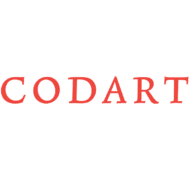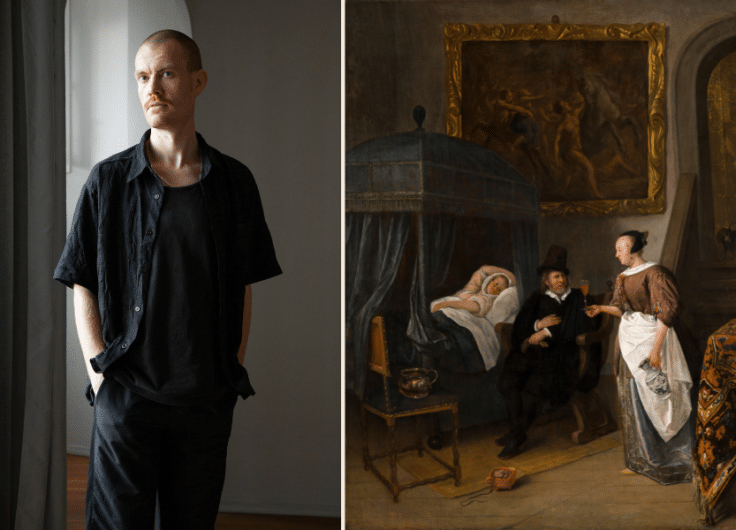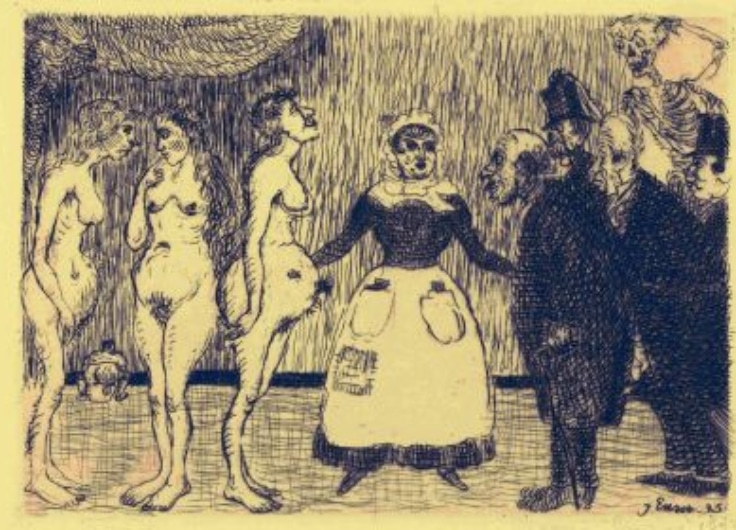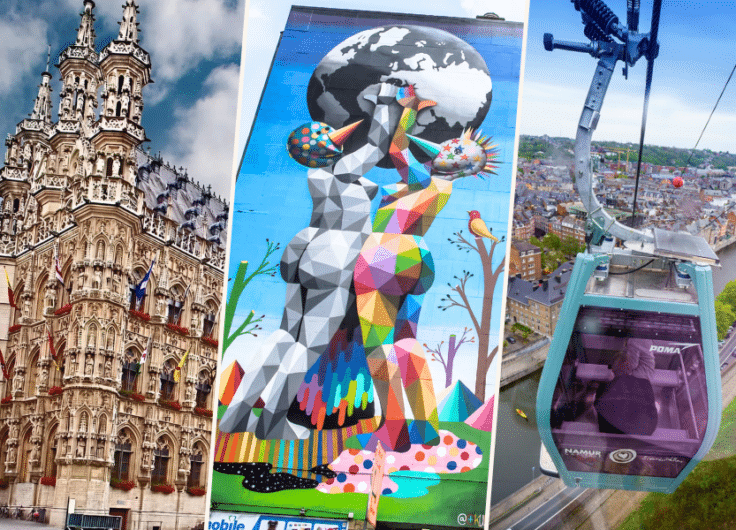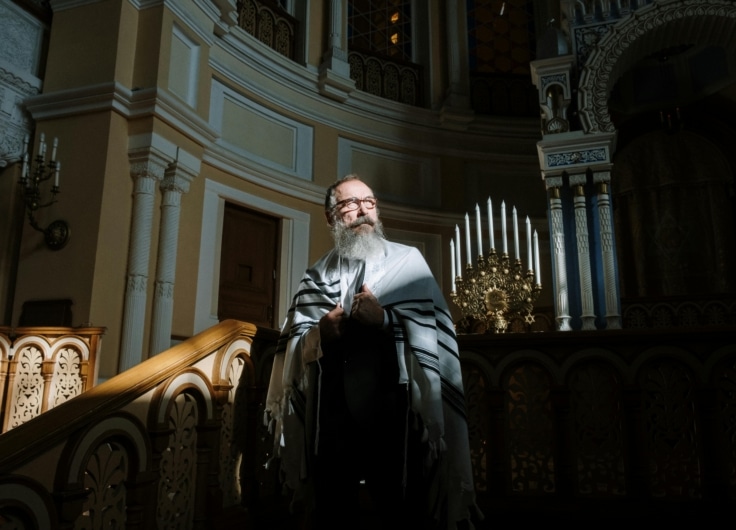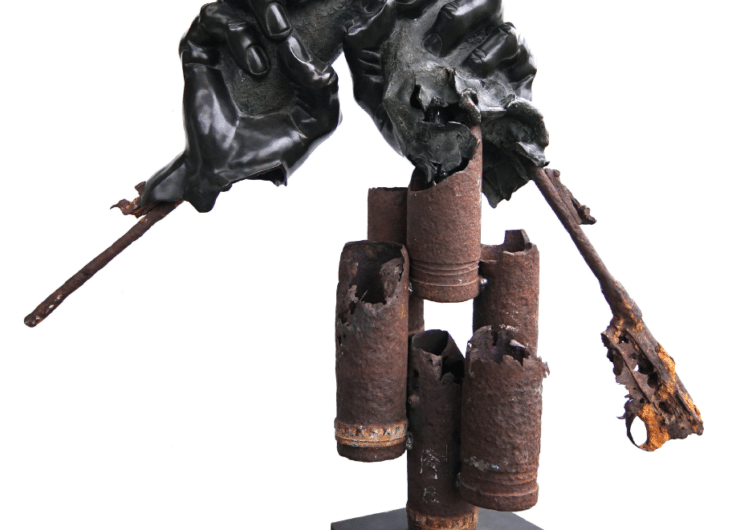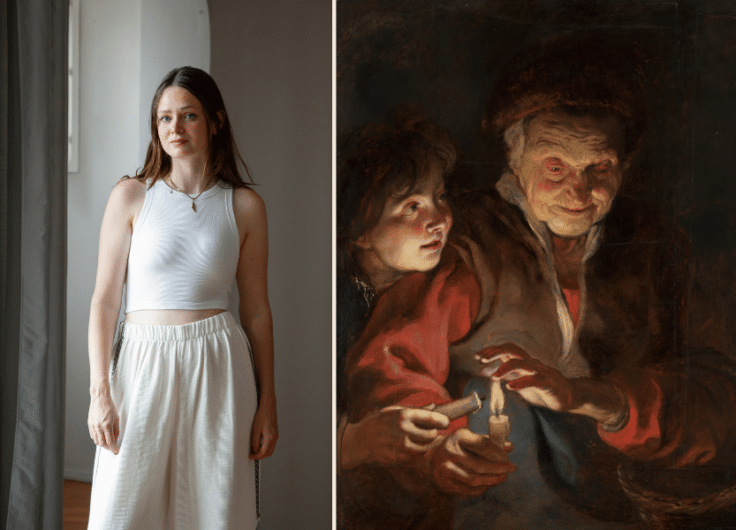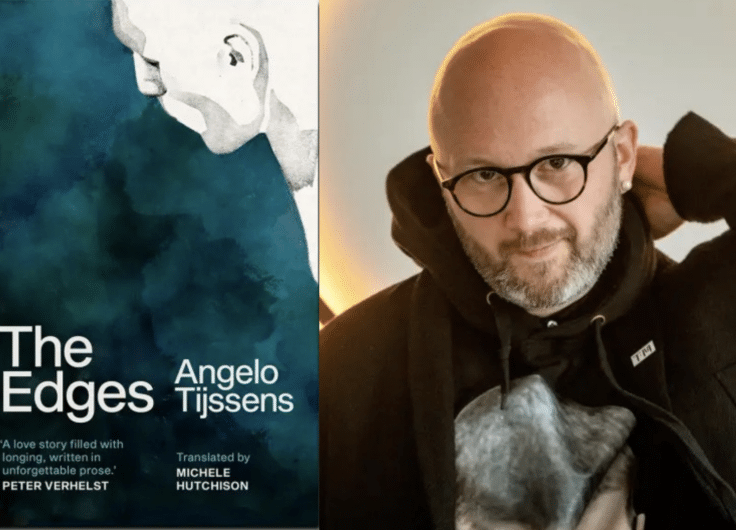Old Dutch and Flemish art can be admired in hundreds of museums worldwide. Every now and then they add new work to their collections. These are the latest acquisitions.
Another Flemish Primitive for Musea Brugge
After acquiring Saint Veronica with the Sudarium by the Bruges Master of the Legend of Saint Ursula earlier this year, Musea Brugge has added another early work to its core collection of Flemish Primitives. The panel was painted by a follower of Jan Van Eyck and was part of a British collection.
Paintings that can be directly linked to Jan Van Eyck’s workshop are very rarely offered for sale, which is why the City of Bruges and the museum management are delighted about this important addition to the collection. In the run-up to the Van Eyck year in 2020, the city and its museums are also able to offer art lovers and visitors another magnificent reason to visit Bruges.
Dendrochronological analysis suggests that the oak support dates from 1387. The panel itself was probably only painted during the second decade of the fifteenth century, i.e., during Van Eyck’s lifetime, or shortly after his death in 1441.
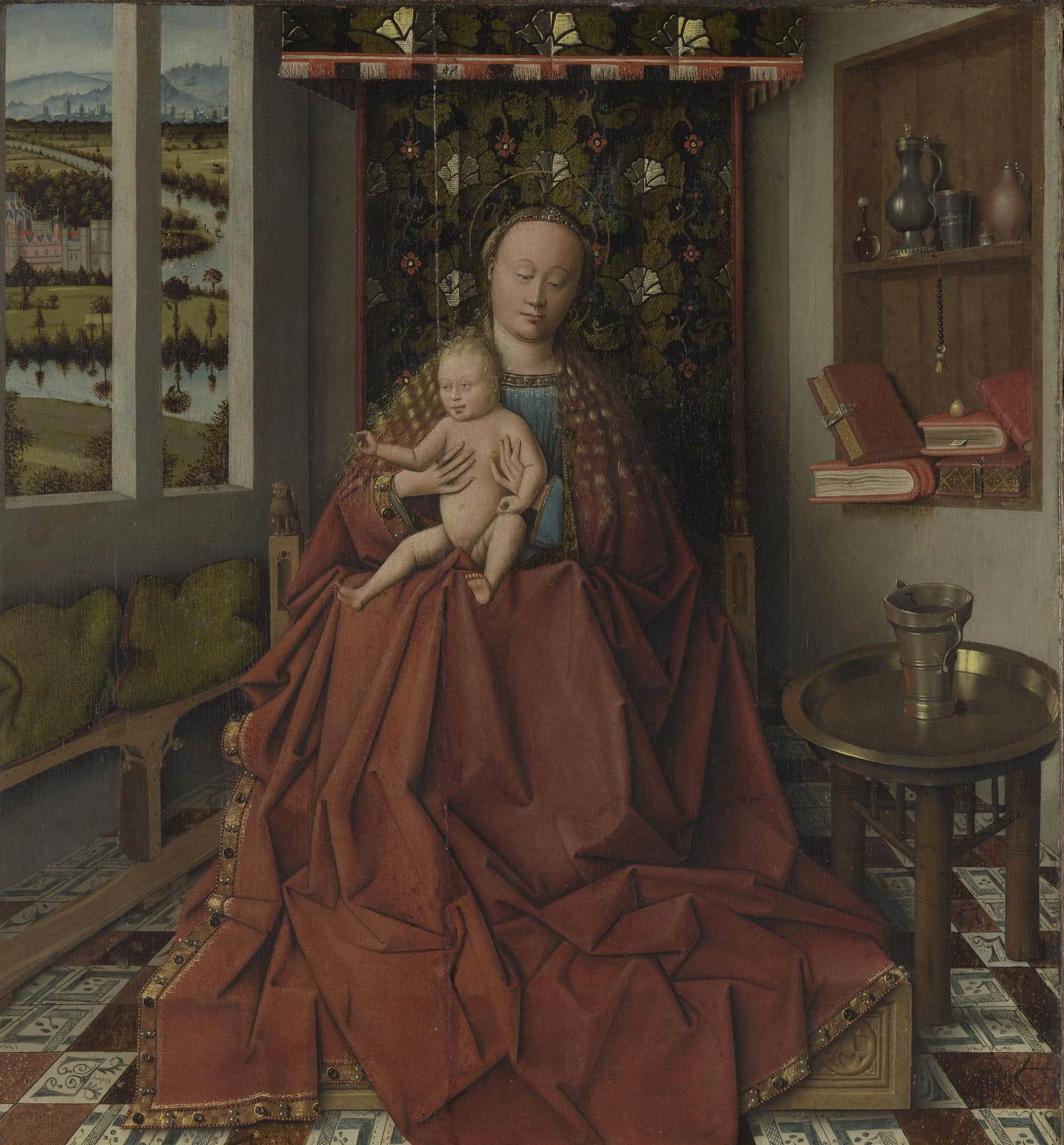 Follower or workshop of Jan Van Eyck, Virgin and Child, ca. 1450
Follower or workshop of Jan Van Eyck, Virgin and Child, ca. 1450© Musea Brugge, Bruges
The painting represents the Virgin and Child enthroned in a room. The anonymous painter combined elements from various works by Van Eyck and his workshop in his compositional arrangement. We can therefore assume that he had access to the workshop drawings of the Bruges master and that he may even have been employed as a painter in his workshop for some time.
It is not clear who commissioned this panel painting and for which purpose it was originally created. In all likelihood, the painting was originally intended as a decorative altarpiece to be used for private devotion. Its earliest known owner was Lucien Bonaparte, Napoleon’s brother, who sold it in 1816.
The municipal council of Bruges recently approved the acquisition. The official export license has since been issued and the panel painting is currently undergoing a thorough investigation in Bruges. The painting will be included in the exhibition Jan van Eyck in Bruges, which will run in the Groeningemuseum from 12 March 2020.
Source: Musea Brugge website
Mauritshuis acquires paintings by Nicolaes Berchem
The Mauritshuis has acquired three allegorical paintings by Nicolaes Berchem. Together with Allegory of Summer – which has been at the Mauritshuis since 1992 – they form an exceptional ensemble. The four paintings show the seasons and were made around 1670 to decorate an Amsterdam canal house. The series was broken up in the late nineteenth century, but has now been reunited.
In each painting, a medallion with the personification of the season seated on a chariot appears, pulled along in a procession by a pair of animals. Spring shows Flora, the Roman goddess of spring. Summer is represented by Ceres, god of grain and the harvest. Autumn is personified by Bacchus, god of wine.
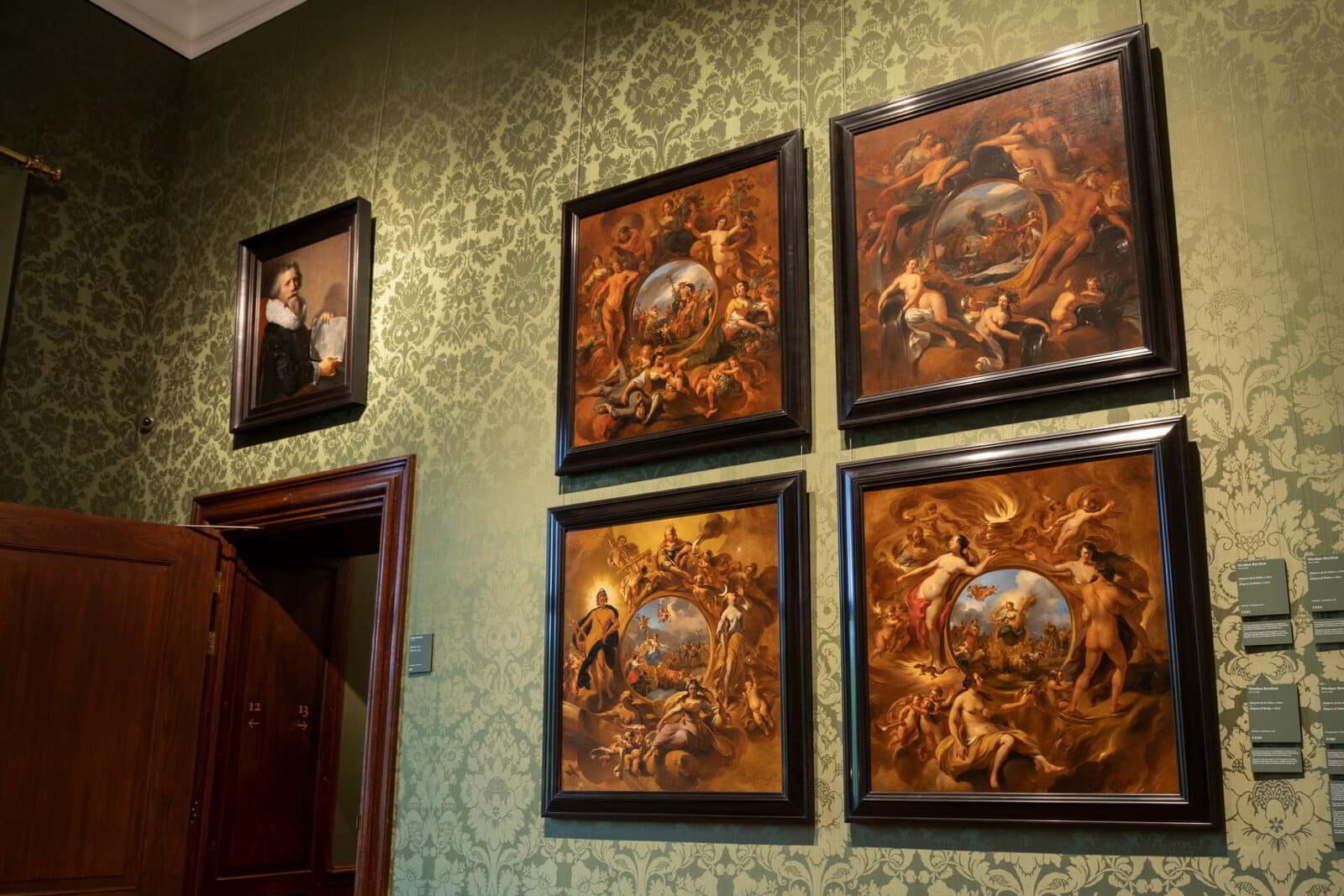 The four paintings reunited at the Mauritshuis
The four paintings reunited at the Mauritshuis© Mauritshuis
Finally Winter appears as an elderly man, rather than an ancient god or goddess. Around the medallions, figures and symbols connect the season with one of the four elements: spring with water, summer with fire, autumn with earth and winter with water. Owing to the fact that all the figures are interacting in a playful manner, everything seems to be in motion.
Berchem’s four seasons will be on view in the Mauritshuis’s Potter Room from 18 June 2019. The long-term plan is to display them as originally intended: as ‘overdoors’.
Source: press release of the Mauritshuis, June 2019
Jan van Huysum returns to the Uffizi
Germany has agreed to return a still-life by Dutch painter Jan van Huysum to the Uffizi Galleries. Vase of Flowers was looted from Palazzo Piti in Florence during World War II and remained in Germany ever since. The news follows a public campaign by the museum’s director, Eike Schmidt. Earlier this year, Schmidt hung a black and white copy of the painting at the Palazzo Pitti, with the word “stolen” in English, German and Italian on it.
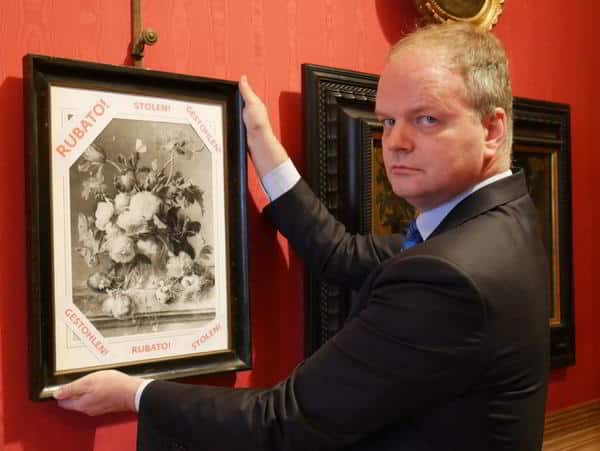 Uffizi director Eike Schmidt posing with a copy of the still-life
Uffizi director Eike Schmidt posing with a copy of the still-life© Photo: Uffizi Galleries on Twitter
According to the Uffizi, the still-life by Jan van Huysum (1682-1749) was in the collections of the Pitti Palace since 1824, when it was bought by Habsburg-Lorraine Grand Duke of Tuscany Leopold II for the newly inaugurated Palatine Gallery. For over a century it remained on display in the Putti Room, together with other Dutch still-lifes from the seventeenth and eighteenth centuries. In 1940, when the palace was evacuated at the beginning of the war, the painting was brought to the Medicean Villa of Poggio a Caiano. In 1943 it was moved to the Bossi Pucci Villa, in Florence, until retreating German soldiers took it along with other works to Castel Giovio, in the province of Bolzano. There the crate containing the Vase of Flowers was opened and the artwork ended up in Germany, where it disappeared.
Italy’s foreign office announced that Heiko Maas, the German foreign minister, and his Italian counterpart Enzo Moavero will soon travel to Florence to hand the artwork back to the gallery.
Also see the article on The Art Newspaper website.
Sculptures by Hendrik Roesen for M-Leuven
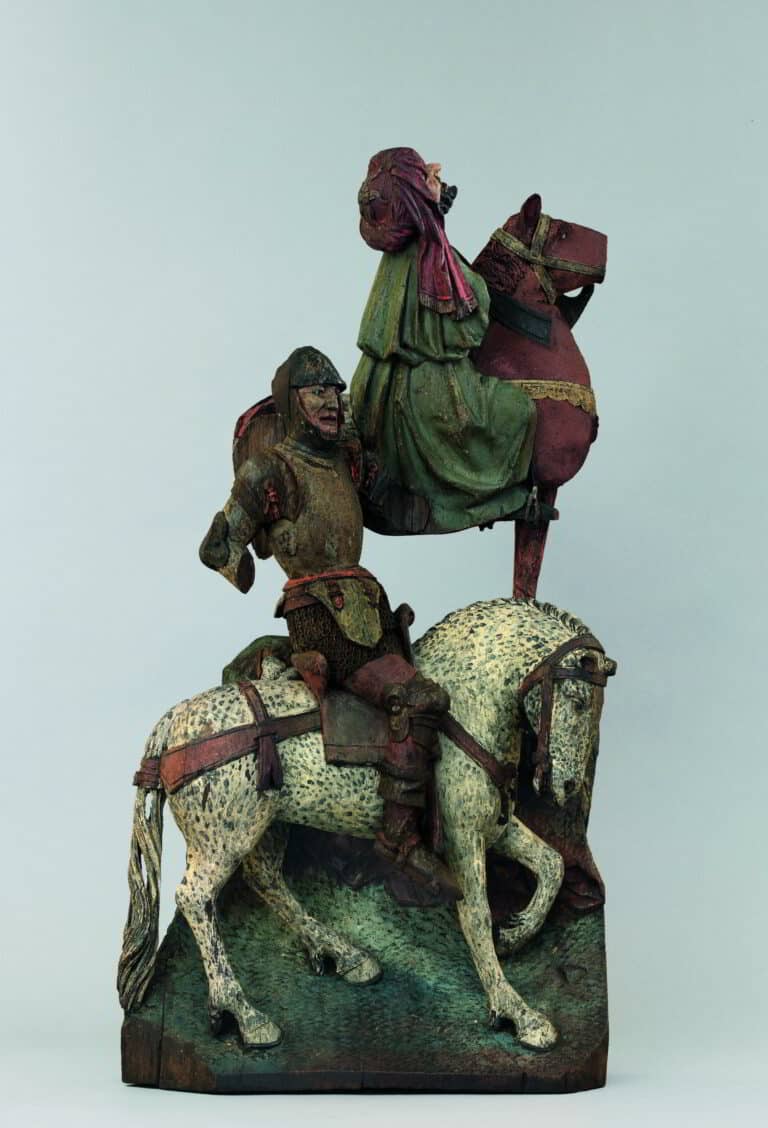 Hendrik Roessen, Horsmen, ca. 1500-25, M, Leuven
Hendrik Roessen, Horsmen, ca. 1500-25, M, Leuven© Museum M
Two medieval altarpiece fragments have been acquired by Museum M in Leuven. Sven Gatz, the Flemish Minister for Culture, decided to acquire the Flemish masterpieces and gave them on long-term loan to the Leuven museum.
Made in the early sixteenth century by the Leuven sculptor Hendrik Roesen, the two pieces depict four Roman horsemen and were meant to flank a crucifixion altarpiece. The very finely detailed figures bear the signature of Hendrik Roesen, which is unique for early sixteenth-century sculpture because most contemporary objects are unsigned.
The new acquisitions are on display until 19 April 2020, after which they will be transferred to the museum depot for further research. The figures will be included in an exhibition on Hendrik Roesen in 2021.
Dutch Political Prints in Krannert Art Museum
The Krannert Art Museum (KAM) in Champaign, Illinois has amassed the largest museum collection of early modern Dutch political prints outside of Europe, thanks to strategic acquisitions guided by CODART member Maureen Warren, KAM’s curator of European and American art.
During the past year, KAM has added more than 100 Dutch political prints from the late 16th to the early 18th centuries. They portray a broad range of themes and formats, and add a wide variety of printmakers to KAM’s already strong collection of works on paper.
“Krannert Art Museum has good examples, particularly in painting, of art from the Dutch Golden Age, but the collection lacked works that address political culture,” said KAM director Jon Seydl. “In one stroke, this series of strong acquisitions turns the University of Illinois into an important center for this material. We’re also thrilled to have an exhibition in the works so students, faculty and the public can see the prints firsthand.”
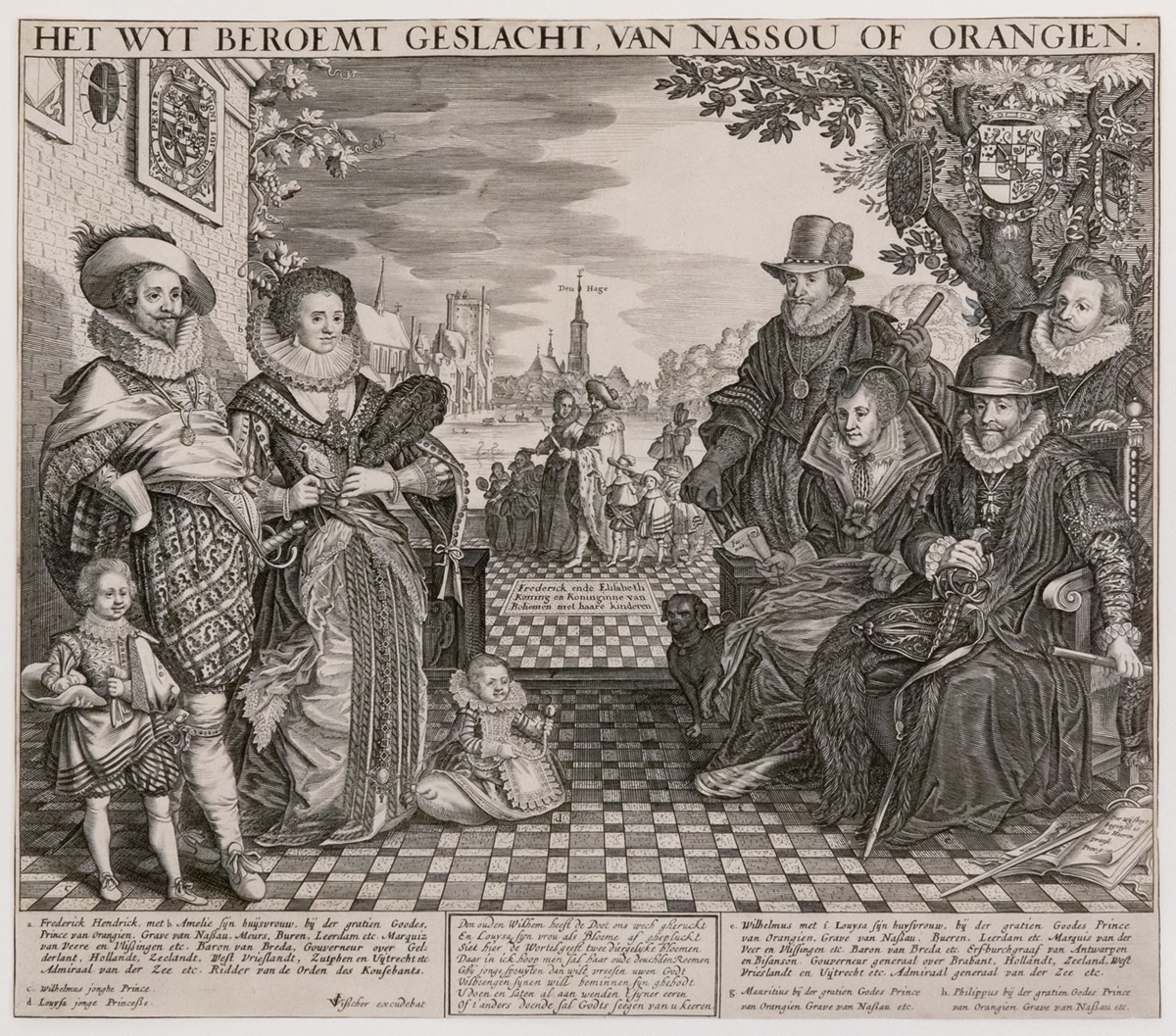 Claes Jansz Visscher (1587–1652), The Far-famed House of Nassau or Orange, ca. 1628–1629, Krannert Art Museum, Champaign, Illinois
Claes Jansz Visscher (1587–1652), The Far-famed House of Nassau or Orange, ca. 1628–1629, Krannert Art Museum, Champaign, Illinois© Krannert Art Museum
Warren, a leading print curator and scholar of early modern Dutch art, is curating the exhibition, planned for fall 2021 and provisionally titled “Fake News and Lying Pictures: Political Prints in the Dutch Golden Age.” The museum received a grant from the Getty Foundation to support the exhibition and an accompanying publication through The Paper Project, a funding initiative focused on prints and drawings curatorship in the 21st century. The exhibition will look at how images were used to put a favorable spin on events and persuade people to believe a certain retelling of history.
“I’d like audiences to see the 17th-century Netherlands a little differently,” Warren said. “People think of the tranquility Vermeer’s milkmaid and Rembrandt’s windmills, so they can imagine this was a peaceful landscape. Politically, it was a maelstrom. Opposing groups were fighting tooth and nail, sometimes quite violently. I’d like this exhibition to resonate with our political culture and fake news in our own age, and to lead visitors to see how we continue to be persuaded by imagery.”
Warren said some of the Dutch prints KAM acquired are not often collected by museums, even if they were made by prominent artists. Polemical images were often printed on broadsheets that would contain a large amount of text, so curators have seen them as more properly belonging to a library, not an art museum. But Warren and Seydl see the ways that visual culture and political culture are deeply connected through these works. To bring them to KAM, Warren wrote a successful application to the U. of I.’s John N. Chester Endowment Fund, which supported one-third of the total acquisitions.
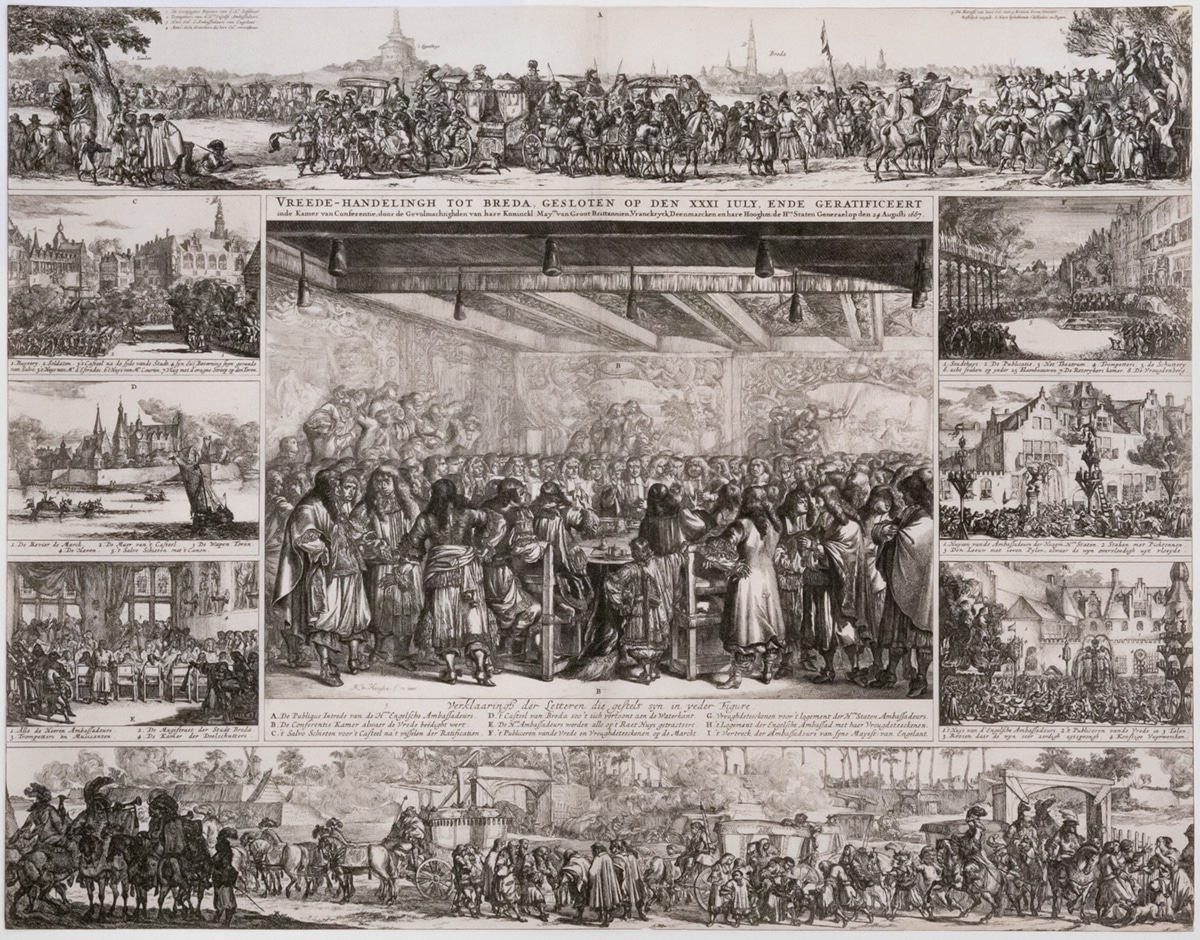 Romeyn de Hooghe (1645–1708), Peace Conference at Breda, 1667, depicted in nine scenes, 1667, Krannert Art Museum, Champaign, Illinois
Romeyn de Hooghe (1645–1708), Peace Conference at Breda, 1667, depicted in nine scenes, 1667, Krannert Art Museum, Champaign, Illinois© Krannert Art Museum
“This is not a library collection. These are works by the finest artists in the 17th-century Netherlands working in the field of print,” Seydl said. “We were able to acquire a remarkable number for their quality and importance.” Such Golden Age prints are often more rare than fine art prints of the period, said Brooks Rich, the associate curator of Old Master prints at the National Gallery of Art.
In addition to political propaganda and satire, the newly-acquired prints include views of the daily lives of women that depict their relative autonomy and independence in Dutch society. Other prints show images of Dutch naval power, trade, war and crime.
Source: Information from the press release, 26 June 2019

